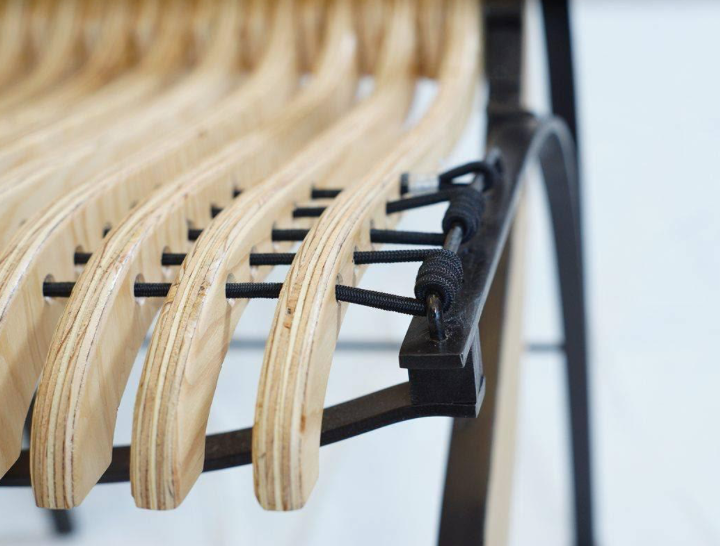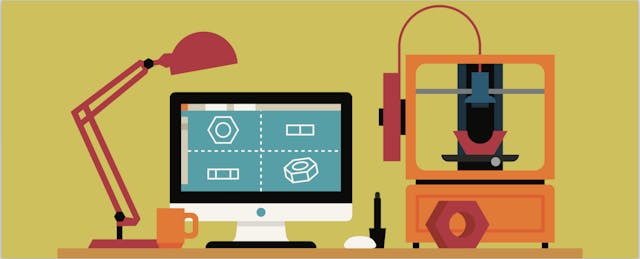The California Community College Chancellor’s Office is making a statement with its recent three-year, $17 million dollar investment in a statewide network of 35 maker-focused colleges. The California Community College (CCC) Maker Initiative will support nearly one third of the state system’s colleges—and their entrepreneurial students, innovative faculty, and unique makerspaces.
California’s community colleges sit at the intersection of higher education, regional economies, and workforce development. With the CCC Maker Initiative’s focus on preparing students for science, technology, engineering, art, and mathematics (STEAM) careers through hands-on, content-rich design projects and relevant curriculum, the statewide network will be positioned as a strategic educational pipeline for high-value jobs.
If we want to grow the STEAM economy, we need to increase access to education for all diverse populations, says Van Ton-Quinlivan, CCC’s Vice Chancellor for Economic and Workforce Development. She explains, “In makerspaces, students get to design and invent with other makers, and prepare themselves with skills valued in a creative economy.”
As part of the Doing What MATTERS for Jobs and the Economy initiative and the Strong Workforce Taskforce recommendations, the CCC Maker Initiative will expand on the making that is already happening in colleges around the state and then use its cross-sector network to onboard additional colleges interested in supporting making in their region.
CCC by the Numbers
- California’s 2.1 million full and part-time community college students comprise the largest system of higher education in the United States.
- CCC is the largest provider of workforce training in the state and nation, offering postsecondary technical education in 175 fields, and educating more than 100,000 individuals each year in industry-specific workforce skills.
- 67% of community college students are people of diverse ethnic backgrounds and roughly 53% are female. Students who earn a degree or certificate from a CCC nearly double their earnings within three years.
- Occupations that require an associate degree will grow by 18 percent through 2020–faster than the new job growth for jobs requiring a bachelor’s degree.
- The U.S. Bureau of Labor Statistics forecasts that by 2022, California will have the largest STEM workforce in the nation.
Four Makers and Their Innovations
Here’s a snapshot of the making that’s already happening around California:
Student: Dev Varat
College: Laney College
Makerspace: FabLab
Department: Architecture and Engineering
Many students are drawn to Laney’s Fabrication Laboratory (FabLab), for various reasons. Dev Varat was driven by his vision to fabricate a chair that was flexible enough to mold to a torso when someone sat, yet supportive enough to bounce an entire body into action and productivity as someone stood. With the use of a large CNC table router and through welding, metalwork, and woodworking in the FabLab, Dev was able to combine his enthusiasm for materials and construction to achieve his desired final product.

full size image here

full size image here
Student: Adrian Cummings
College: Sierra College
Makerspace: Hacker Lab
Department: Mechatronics
Traffic lights, heating and cooling systems, and ATM machines are just a few examples of the mechatronic systems that help make many of our everyday activities safe and seamless. Adrian Cummings is an avid cyclist and developed Cycle Light—a signal, brake and warning light system—in order to make cyclists more visible to drivers. He drew on his mechatronics coursework, and used the Arduino open-source electronic prototyping platform to customize his Cycle Light to different bikes. He then made prototypes for the cases on the 3D printer at the Hacker Lab at Sierra College.

full size image here
Instructor: Heather Lee
College: Sierra College
Makerspace: Hacker Lab
Heather Lee is a mother of two children, a creative maker, and a Hacker Lab instructor at Sierra College. At the Lab, she teaches classes on jewelry design and fabric cutting with a laser cutter, and is helping students customize their own stamp making, leather work, and 3D art design. Heather says that as a working mom, she would not be able to access the cutting-edge fabrication tools and materials without the Hacker Lab.

full size image here
Student: Nacasio Nakamine
College: Laney College
Makerspace: FabLab
Department: Carpentry
When a space has a reputation of inspiring innovation, ingenuity, and creativity, it is not uncommon to witness makers reciprocate with attention to and upkeep of the space. Students such as Nacasio find opportunities within the lab to express their talents and build infrastructure using shop materials, tools, and equipment. In this image, Nacasio has meticulously designed and assembled a storage cabinet to organize 3D printing supplies. The cabinet was laser cut and assembled without the use of any adhesive.

full size image here
CCC's Maker Initiative Model
Over the next five months, 35 California community colleges participating in the Maker Initiative will form campus teams, participate in webinars and workshops, develop their ecosystem maps of community and education assets, envision what their makerspaces might look like, hold student competitions or events, and develop two-year implementation plans.
“Golden West College is energized by the opportunity to develop a vision that is designed with intent to scale innovative thinking, doing, and making to our student, faculty, and community populations,” says David Gatewood, Dean of Workforce and Economic Development.
Colleges will be able to apply for additional funding through May 2019 to build out their makerspace and community of practice. “I think there is a great partnership possible between the Maker movement and California’s community colleges,” says Dale Dougherty, Founder and CEO of Maker Media. “This movement brings tremendous opportunities to students who discover a passion for learning and meet the challenges of turning new ideas into something real. Through the process of making, students learn how to develop valuable skills, collaborate with others to solve problems, and most importantly understand that they have the capacity to create and change the world around them.”
Maker Resources
California Community College Resources:
- California Community Colleges (CCC) Maker Initiative
- Doing What MATTERS for Jobs and the Economy initiative
- Promoting Engagement of the California Community Colleges with the Maker Movement, prepared by the California Council on Science and Technology
- California Community Colleges Key Facts
- California Labor Market Trends,by the Labor Market Information Division, Employment Development Department: State of California
- National Organization for Community College Entrepreneurship
- Sierra College’s Hacker Lab
- Laney College’s FabLab
Additional Maker-Based Organizations:
- Nation of Makers
- Infy Makers
- Maker Education Initiative (Maker Ed)
- Make Schools
- Urban Manufacturing Alliance
- Fab Foundation
- U.S. Fab Lab Network
Maker-Based Publications and Talks:
- Proceedings of the 1st International Symposium on Academic Makerspaces, including paper #47: Creating a network of community colleges with makerspaces: California’s CCC maker model
- Exploring STEAM: Science, Technology, Engineering, Arts and Mathematics, Elizabeth Dayton
- Drawing Women into the Maker Movement: A literature review, Elizabeth Dayton
- Maker Ed’s Open Portfolio Project publications
- Maker Ed’s Youth Makerspace Playbook
- Dale Dougherty’s We Are Makers TED Talk
- AnnMarie Thomas’ Squishy Circuits TED Talk
- David Lang’s My Underwater Robot TED Talk


